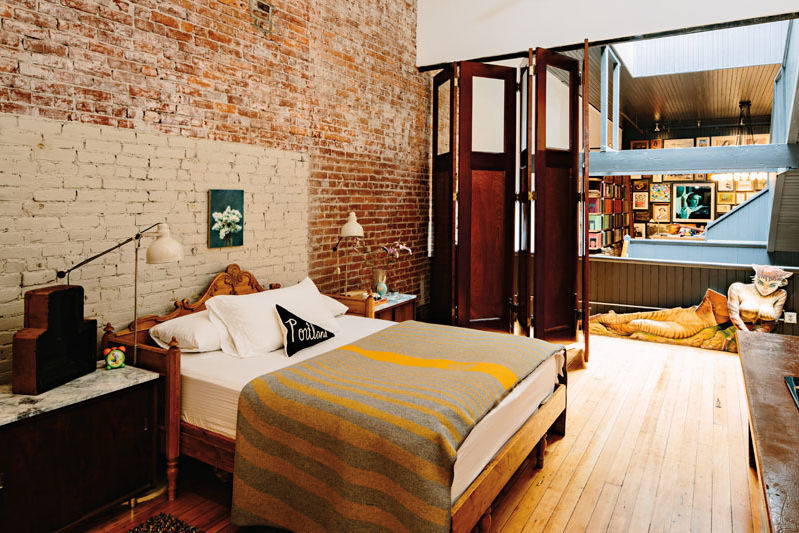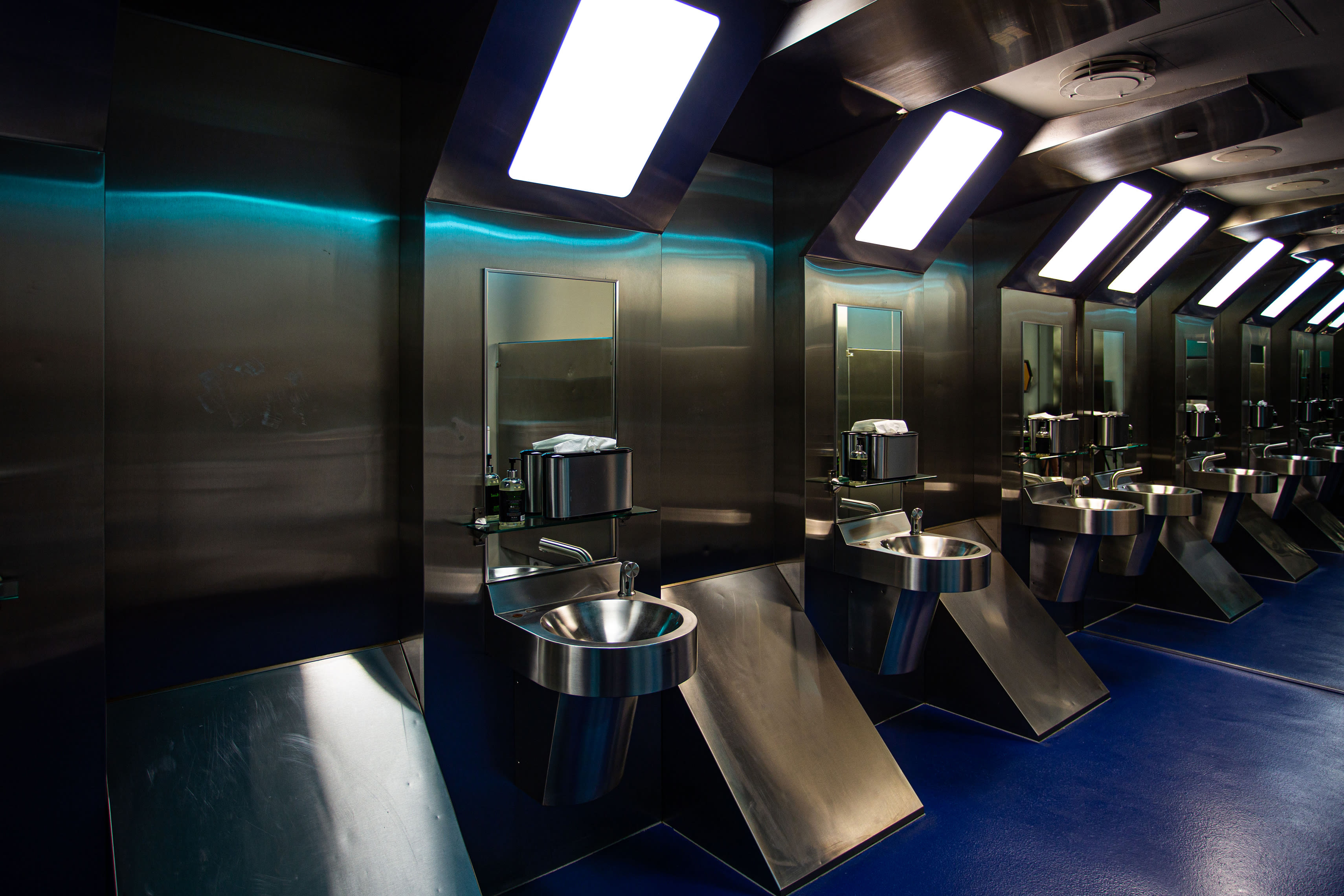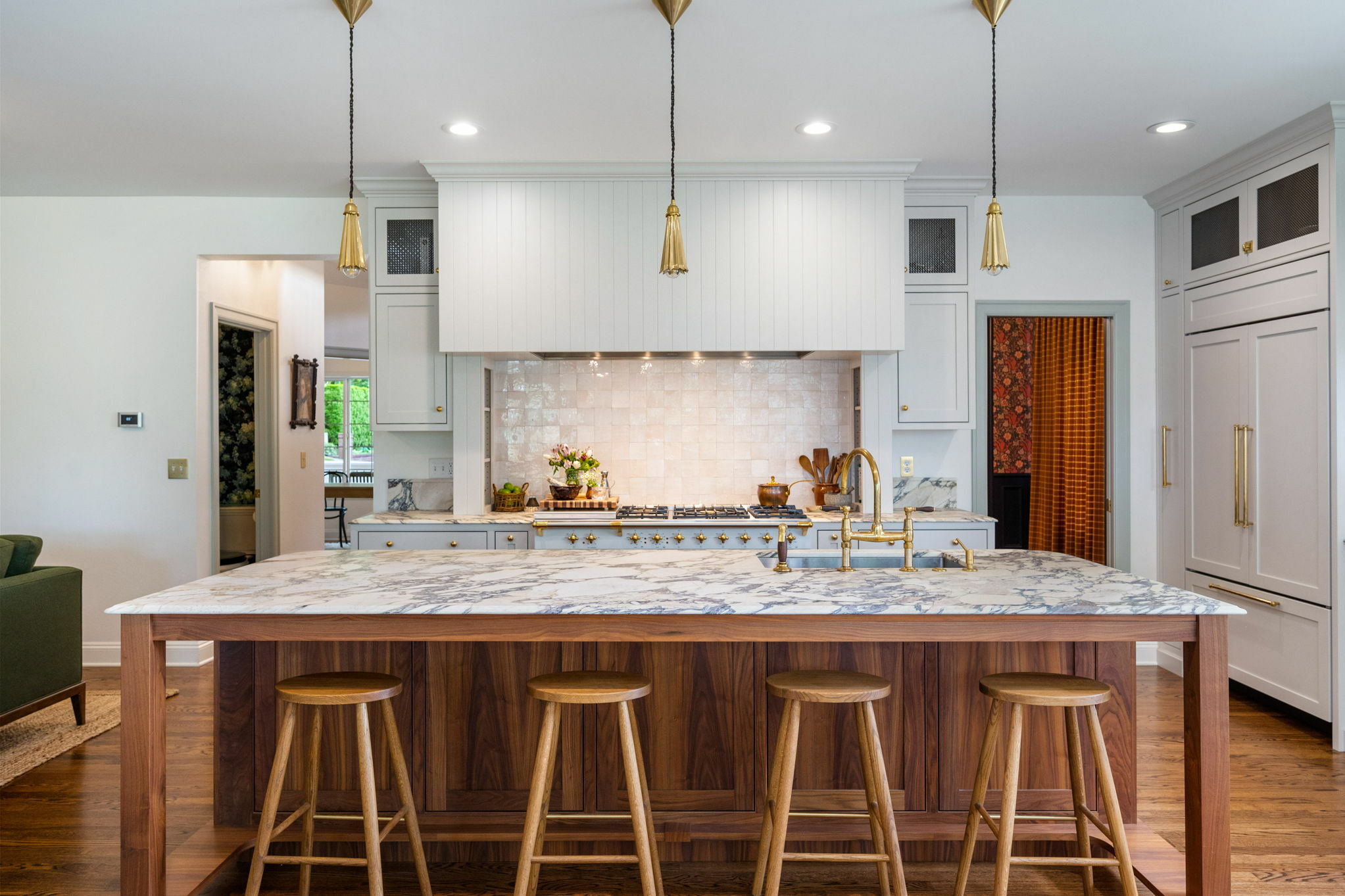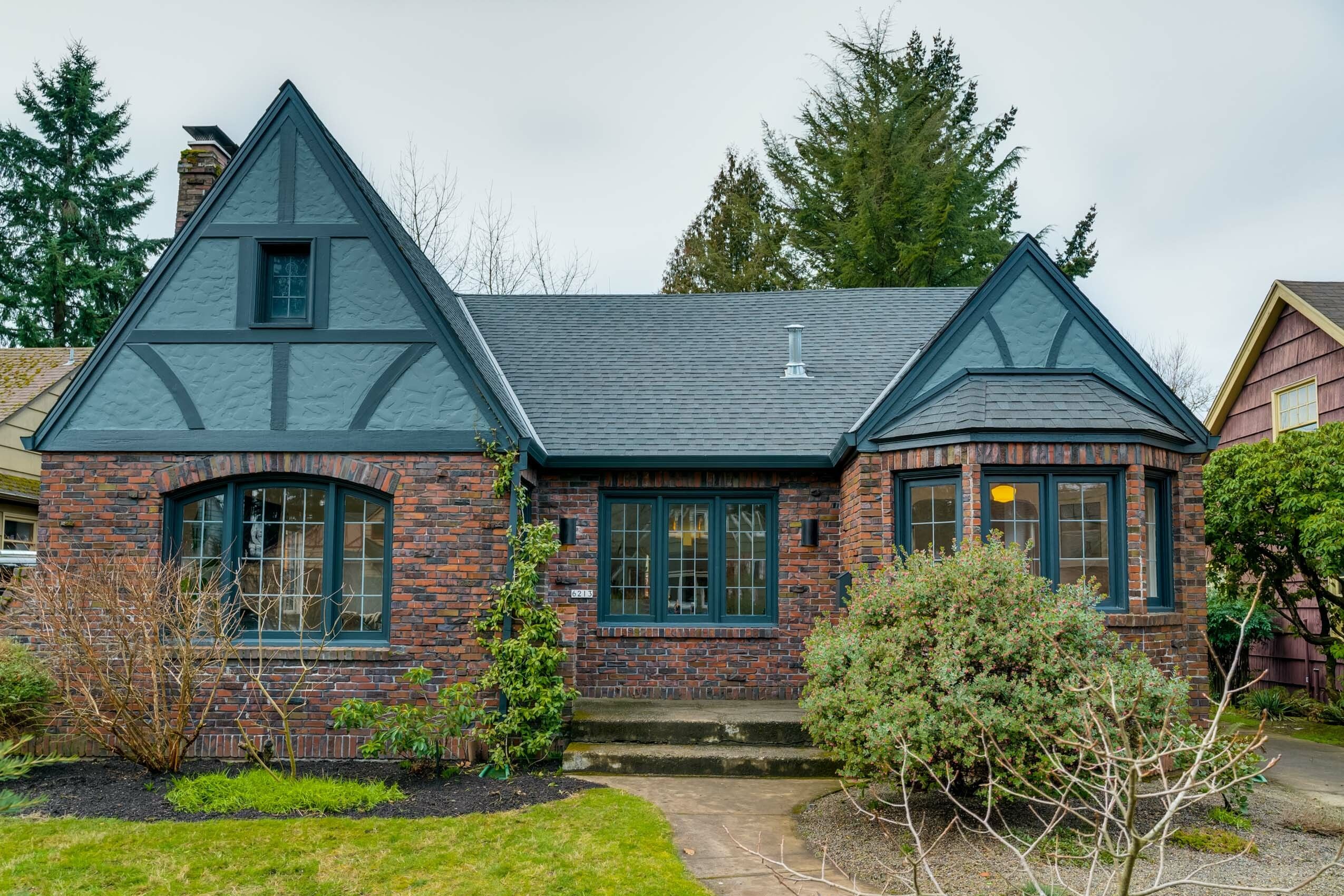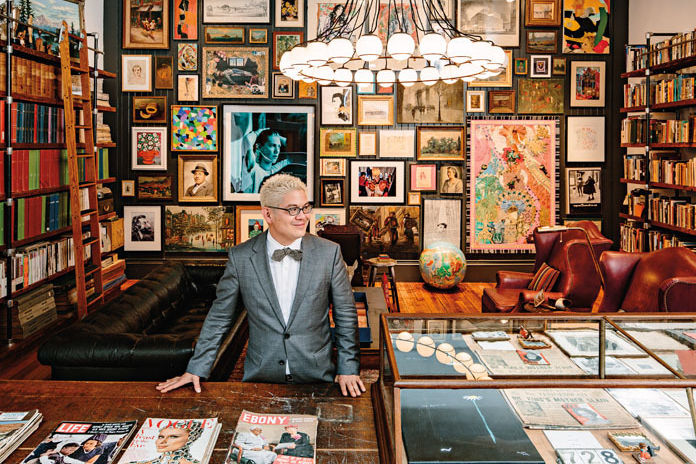
Tailoring Thomas

Thomas Lauderdale’s library is a cabinet of collections, from ’60s-era magazines to pieces by artists like Gus Van Sant and Phyllis Diller. The chandelier is by local designer Jon Hart, and the sofa and chairs are from the boutique Bernadette Breu Experience.
Image: Lincoln Barbour
The best part of a party, says Pink Martini bandleader Thomas Lauderdale, is inviting the guests. Artist and designer Philip Iosca prefers the cleaning up—specifically, he adds with a conspiratorial smile, “washing the dishes.” Since grade school, Lauderdale, 43, has accumulated papers, books, sheet music, art, antiques, and, as his fame and travels expanded, cakes from around the world (yes, birthday and wedding cakes, stored in the refrigerator). An ardent reader of high-design magazines since childhood, Iosca, 31, once imagined his perfect home would be a white room with a bed, a table, and a chair.
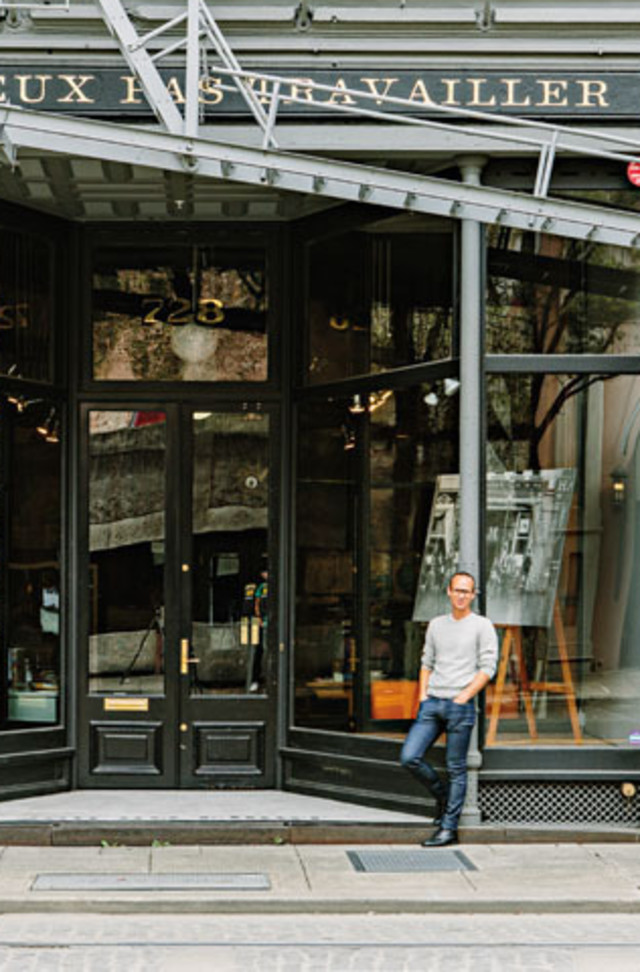
Philip Iosca leans against the cast-iron façade of the Harker Building in the Skidmore District.
Image: Lincoln Barbour
That two such tastes could meet, much less commingle in coupledom for nearly nine years, seems to defy odds. But the record of Lauderdale and Iosca’s aesthetic coevolution stands in the form of the freshly renovated Harker Building in downtown’s Skidmore District, from the stern gray paint Iosca insisted should cover every molding to the bas-reliefs of buxom beauties that once graced the entrance to venerable Portland strip joint Mary’s Club.
“Thomas is a great collector—of people and things—and I’m a great arranger,” says Iosca. “He was my partner, but he was also my client. Every decision was about making the space better for him.”
As often happens when couples remodel, the duo’s romantic relationship didn’t survive. But if the tattered-yet-noble building had always been akin to the ultimate thrift-store find for Lauderdale, Iosca tailored it to the perfect fit.
“It’s totally compatible with who I am,” says Lauderdale. “The message with this building is that you can do something fantastic and not go broke. It just requires problem solving, ingenuity, and a certain sense of humor.”
Lauderdale first spied a for-rent sign in the Harker Building’s third-floor window in 1996, during an early Pink Martini gig on the neighboring Yamhill Market’s rooftop. “No heat, no electricity, no plumbing, $400 a month,” he recalls.
He couldn’t have known it then, but future research revealed how eerily perfect the building was. A deep dive through vintage photos and city records found that a year after the building’s 1878 completion, the Oregon Conservatory of Music opened upstairs. It was run by William Kinross, a Scot, Civil War veteran, opera star, and eventual conductor of the Portland Symphony Society, now the Oregon Symphony—a frequent Lauderdale collaborator and beneficiary. In 1918, the local congregation of the tiny Christian denomination of United Brethren bought the building, establishing a Chinese Mission on the second floor. Along with a cadre of siblings he likens to “Josephine Baker’s Rainbow Tribe,” Lauderdale, who describes his ethnicity as “mystery Asian,” was adopted by a Church of the Brethren minister. He eventually found photographs of the Portland mission in a library 30 minutes from his childhood home in Indiana. “Everything has converged in an amazing way,” he says.
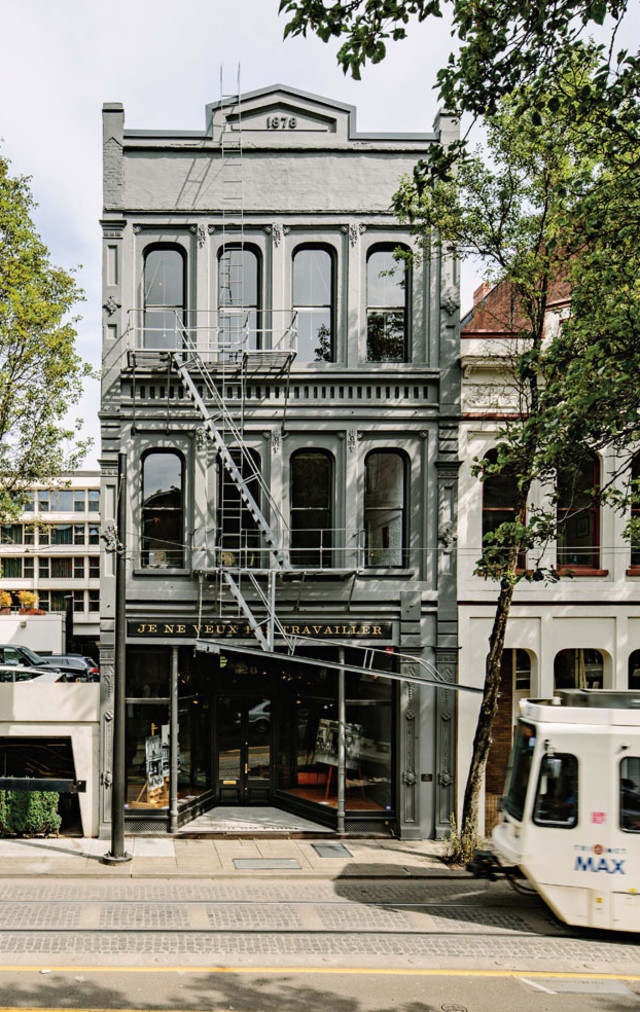
Iosca sampled more than 30 different colors before creating the custom Benjamin Moore “Harker Building Gray” for the exterior.
Image: Lincoln Barbour
His personal history with the building would turn into a saga in its own right. In his early years as a renter, burning a propane heater and showering at the gym across the street, he ran up $40,000 in debt from producing Pink Martini’s first album, Sympathique. But soon, a flurry of European exposure reversed his fortunes: the French car company Citroën plucked the jaunty title track to market its Xsara Picasso; the Cannes Film Festival invited Pink Martini to play; and the song became an unofficial anthem for striking French workers. (The chorus, “Je ne veux pas travailler,” translates to “I don’t want to work.”) Flush with cash for the first time in his life, Lauderdale retired the debt and made a successful offer on the building in 2001.
The 9,625-square-foot space quickly became Lauderdale’s library-cum-house of wonders, holding everything from his record and sheet music archive to items like the sitar Peter Sellers played in the 1968 movie The Party.
Moreover, it became one of the city’s most important cultural hubs, from dinners and private concerts, which Lauderdale frequently auctions off to benefit causes and organizations like the Oregon Symphony and Cascade AIDS Project, to his legendary annual holiday party, replete with a towering tree, caroling, and arguably the most eclectic and influential gathering of Portlanders to be found.
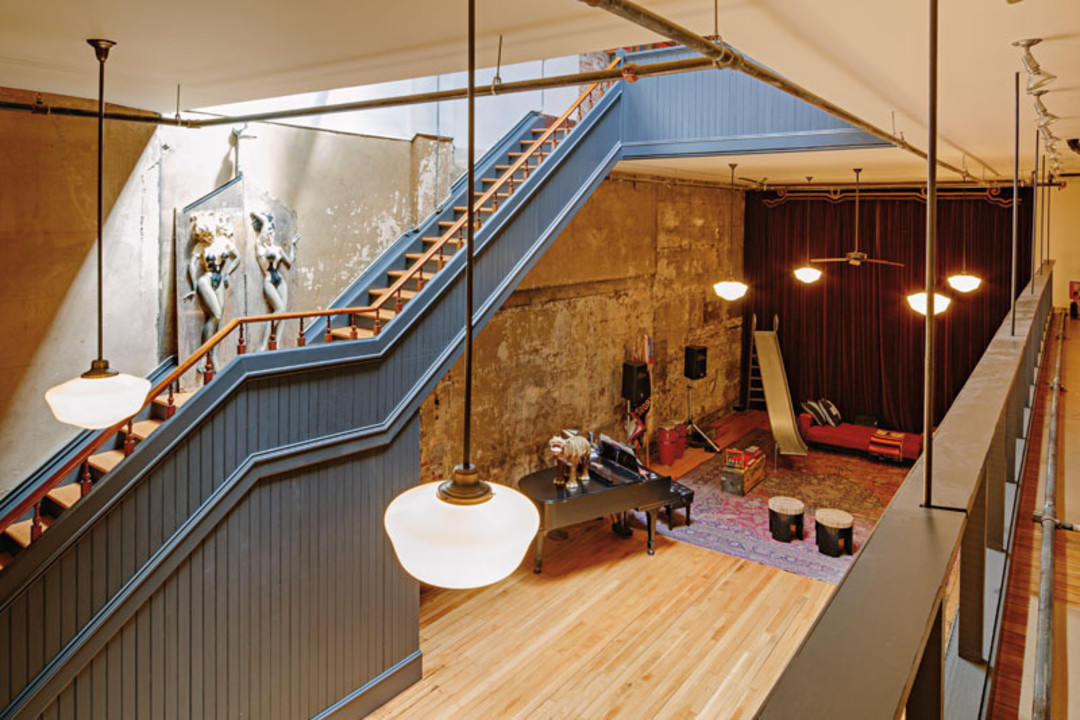
Lauderdale’s rehearsal space sits at the base of a skylit stairwell that winds past bas-reliefs from downtown landmark Mary’s Club.
Image: Lincoln Barbour
Lauderdale first invited Iosca to the building in 2004, to introduce the young designer to the sound of a vinyl record: an LP of Yma Sumac. Romance begat remodeling: within a week, Iosca had moved bookcases that were blocking windows and set his sights on evicting the global collection of desserts from the refrigerator. “That’s when it began being Iosca-cized,” Lauderdale quips.
“There was so much texture in the building, you couldn’t really see anything,” Iosca remembers. “It was a 9,000-square-foot building with 1,200 square feet usable space.”
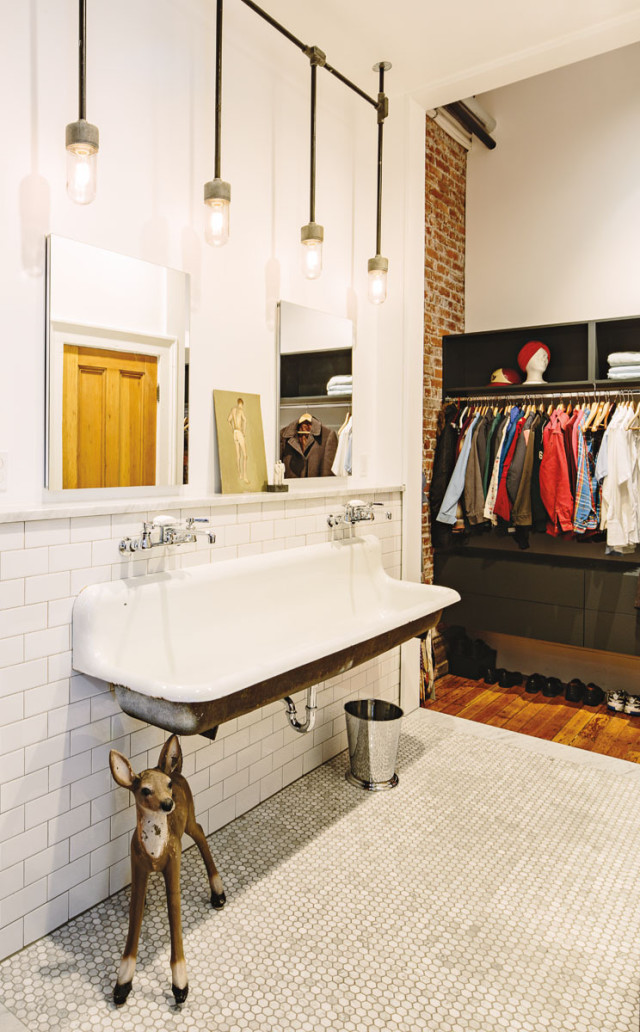
Iosca repurposed a vintage urinal from Rejuvenation Lighting and House Parts for a bathroom sink
Image: Lincoln Barbour
A New Jersey native who trained in textile design at the Rhode Island School of Design, Iosca is the quintessential boundary-free Portland creative, working on anything from promotions for PICA to his own studio art. But most influentially, he helped fashion the distinctive brand of lo-fi chic that is Portland’s Ace Hotel. The project’s lead designer, Jack Barron, describes the Ace’s décor and branding as a near-seamless partnership, but singles out several specific Iosca contributions: the army surplus “general’s desks,” rain ponchos used to upholster couches in the suites, and the Ace’s iconic custom Pendleton blanket design, featuring an image of the Thompson elk that stands on SW Main Street. Available for sale, the blanket became a popular item in its own right and, according to Bob Christnacht, worldwide sales director for the 150-year-old woolen mill, “our earliest entry in the retro-American-brands-become-hip thing.”
When the fire marshal demanded that Lauderdale update the Harker, Iosca applied the same thriftily elegant approach. A near-compulsive worker, he took over as general contractor (and often as his own subcontractor), painting the entire interior himself, rebuilding used furniture, and, in one particularly obsessive case, carefully razor-cutting burlap from a mesh mezzanine railing to keep the wire’s antique pattern. Building on what he calls “Thomas’s aversion to anything new,” nearly every detail was either refinished or reused from elsewhere: the red velvet curtains salvaged from Salem’s Elsinore Theatre to closet Lauderdale’s music collection, the 10-panel folding door assembly Iosca found at Salvage Works Northwest to serve as one wall of the master suite, or the vintage cast-iron urinal, hung to humorously serve as a double sink.
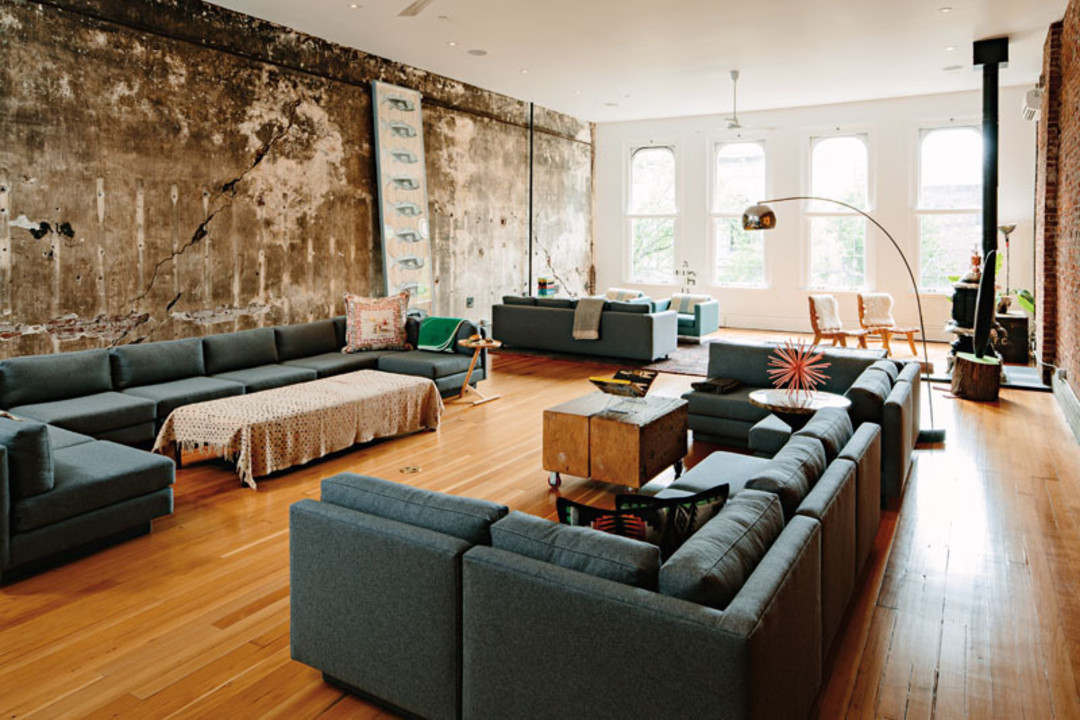
The living room sectional sofa is based on those Iosca designed for Portland’s Ace Hotel, and the Andy Warhol silkscreen was a gift from collector and onetime Interview Magazine publisher Paige Powell.
Image: Lincoln Barbour
The stairs, once enclosed and painted in a quartet of greens and yellows, now elegantly frame a skylit vault that has allowed the annual holiday party tree to grow to 40 feet high. The third floor’s one-time warren of bookshelves and filing cabinets now is a single 24-by-125-foot space, lit by windows freed of shelves, and optionally heated by the beautifully restored original Acorn wood-burning stove.
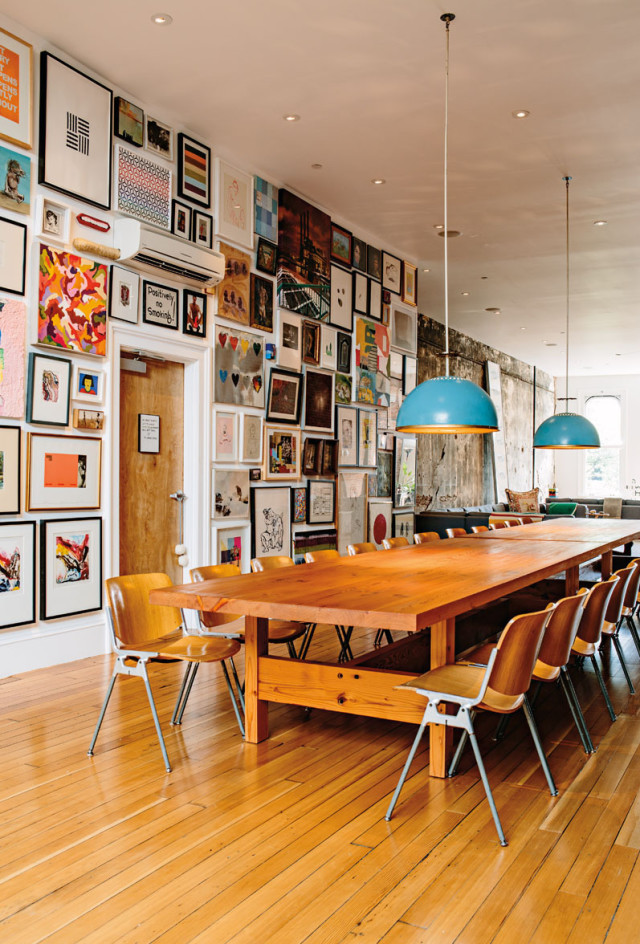
Vintage Castelli chairs surround two custom dining tables by Herb Belrose
Image: Lincoln Barbour
A pair of 12-foot-long dining tables placed in a line to match the equally long open kitchen fills the middle, with a series of couches (based on the sectional lounge Iosca designed for the Ace’s popular lobby) sitting adjacent.
The two battled over colors, couches, and floors. “When I decided to go with gray, I appreciated Thomas’s feedback,” Iosca says with a grin. Demanding that the living room should seat as many as the dining room table—24—Lauderdale prevailed on the couches. Iosca wanted to ebonize the floors; to Lauderdale, that was just dreary black. They remain the original fir, refinished. But Lauderdale’s onetime maze is now a flowing series of spaces designed, Iosca says, to be “comfortable for entertaining 200, 100, 50, and 24.” He trimmed the “texture” to showcase the building’s muscle and bones in a manner casually grand without becoming grandiose.
“We both gave a little,” says Lauderdale.
“I learned to appreciate things,” says Iosca, “not just for their design, but for what they are.”
A touch of the new that Lauderdale accepted—and a decidedly future historic flourish that Iosca freely offered—is a new name befitting the building bought with a song, rendered on the 135-year-old façade in finely drop-shadowed gold leaf: “Je ne veux pas travailler.”
The Stuff of Life
Scenes from the wide-ranging world of Thomas Lauderdale
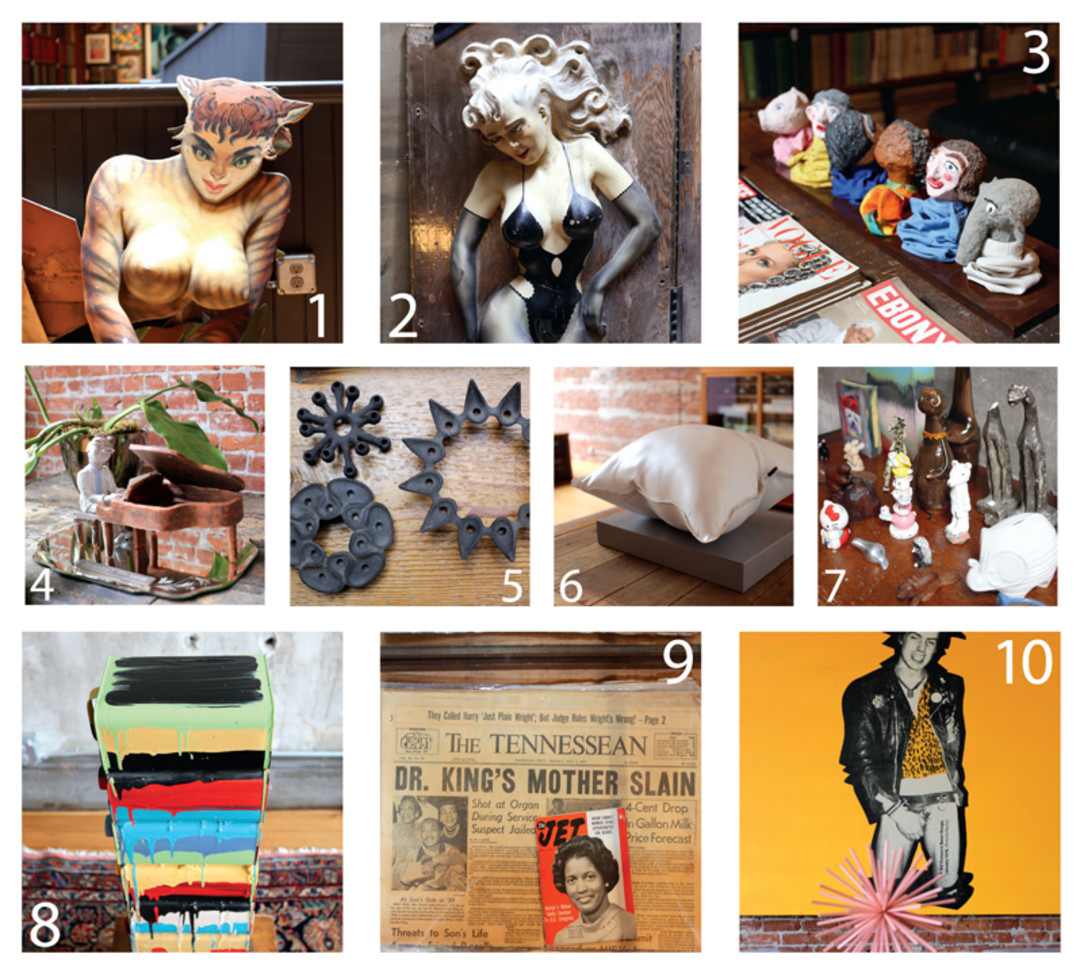
Image: Lincoln Barbour
(1–2) Bas-reliefs from Mary’s Club (3) Plaster-headed hand puppets Iosca found at Stars Antique Mall in Sellwood (4) A ceramic sculpture of Lauderdale by artist Jen Woody (5) Danish and Japanese cast-iron candleholders from Iosca’s collection (6) A hardened plastic pillow by artist Jörg Jakoby (7) Some of Lauderdale’s many animal knickknacks, including a polar bear Iosca made as a child (8) Turp Can Totem by artist (and former Pink Martini manager) John Brodie (9) Items from the civil rights movement (10) A painting by the late punk-fashion pioneer Stephen Sprouse, and a pencil sculpture by Jörg Jakoby
Can't get enough? Sneak a peek inside the Pink Martini bandleader's legendary party palace with our exclusive video of a recent VIP gathering, and find more exclusive photos inside the Harker in our slideshow below.
